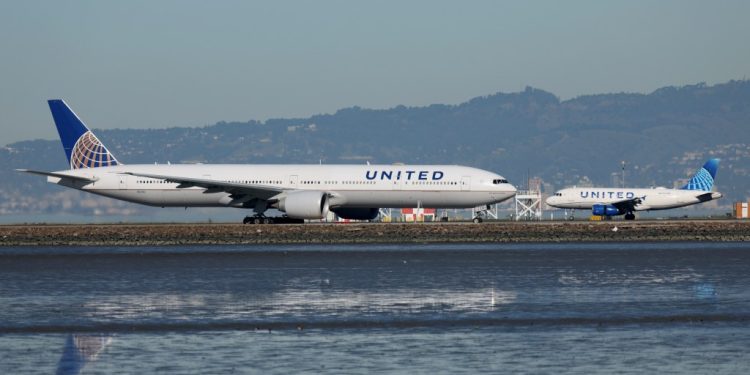A United Airlines flight to San Francisco International Airport last September last September, experienced an almost average collision, causing serious injuries to passengers, due to a “sudden” maneuver, according to a report by the National Transportation Safety Board published on March 27.
The Security Council determined that the probable cause of the incident was “the steep entry of height control by the driving team in response to a traffic alert and the resolution of the collision avoidance system”, which led to passenger injuries.
The Boeing 757-224, traveling from Newark, New Jersey, had to slowly slow down on September 19, while flying over Yolo County, to avoid a collision with another plane at a lower altitude.
The report indicates that two passengers were “seriously injured” and that two members of the cabin crew underwent minor injuries.
“There were two passengers in the rear toilet at the time of the maneuver. A passenger stolen up and landed at the front to fracture the vertebrae L2,” said the report. “The other passenger came out of the toilet when he stole upwards and landed on his leg, which led to a fracture of the ankle.”
Although the seat belt panel was lit, some passengers were in the toilet when the pilot did the sudden maneuver.
According to the investigation, for its landing in San Francisco, the United Airlines plane was invited to descend to 31,000 feet and stay there.
“About 500 feet above this level, the crew received a traffic alert and a collision avoidance system warning an airplane crossing 1,500 feet less. In response, the first officer, who was driving the plane, reduced the vertical speed,” said the report.
“Immediately, a trafficking and avoidance alert of collisions sounded for the same traffic. The first officer disengaged the automatic pilot and the implementation, and presented the plane up, after the advice of the main flight display,” added the report. “The flight data showed that the height increased by about 3 degrees in a second, stopping the descent of the plane. During the two -second maneuver, the vertical acceleration varied from 2.3 to 0.6 gs.”
While the outdoor collisions involving commercial passenger jets are rare, on January 30 near collision in Washington, DC, underlined the concerns about the safety of plane trips.
The federal data, previously reported by this press organization, have shown a fluctuating but persistent number of pillar collisions near the air in the past two decades. The figures from the Ministry of Transport show a minimum of eight in 2008 and a summit of 90 in 2017. The most recent figures, from 2020, show 24 incidents of this type.
The concerns about the potential disasters in the country’s congestioned air space has intensified as passenger travel bounces at a higher level of 20 years, exceeding pre-countryic levels, while the expansion of the airport remains limited and the drop in air traffic controller.
The Federal Aviation Administration has struggled to replace the air traffic retirement controllers. In 2023, the United States had around 1,000 controllers certified less than a decade earlier, representing a decrease of almost 9%.
Originally published:
California Daily Newspapers


